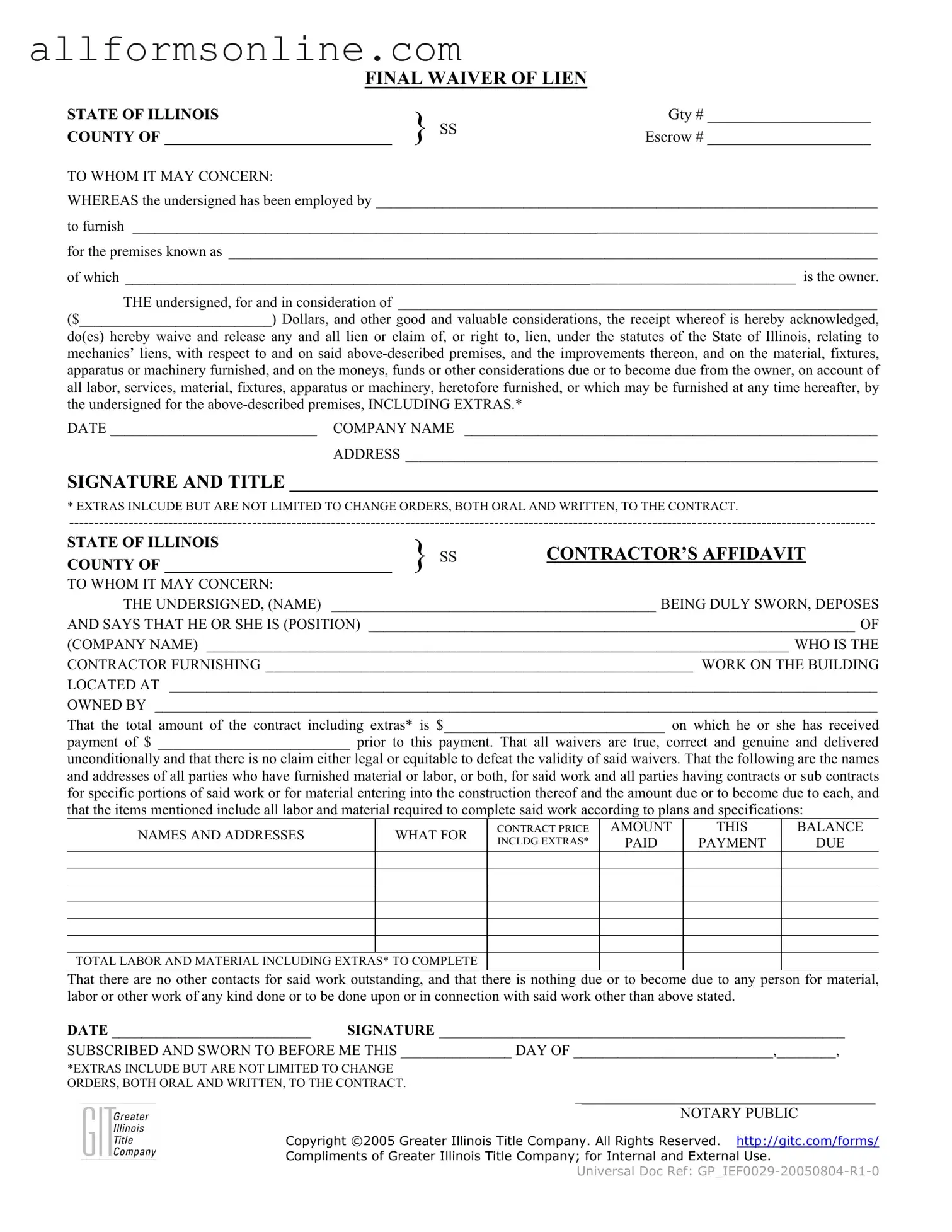Free Illinois Final Waiver Of Lien PDF Form
The Illinois Final Waiver of Lien form is a legal document used to formally relinquish any claims or liens against a property after payment has been received for services rendered. This form is crucial for contractors and subcontractors, ensuring that once they are compensated, they cannot later assert a claim against the property owner for unpaid work. Understanding and properly completing this form can help prevent future disputes and protect the rights of all parties involved.
To fill out the form, please click the button below.
Fill Out Your Form Now
